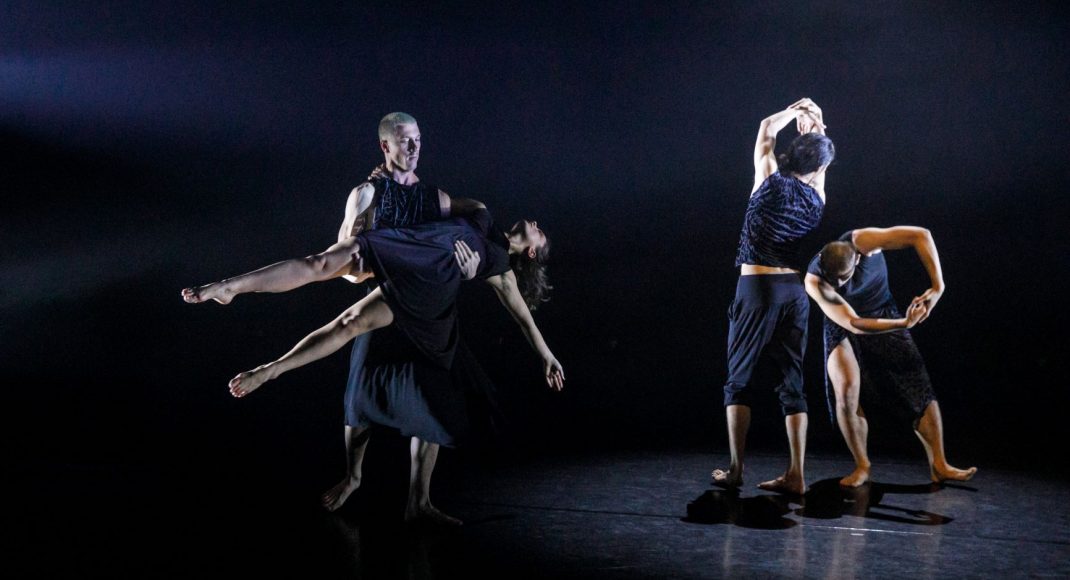29 April 2021, Belconnen Arts Centre, Canberra
My review of The Point was published by Limelight on 30 April 2021. As it is now only available with a subscription, I am posting the full review below minus the images used but followed by a small gallery of images that show some of the costumes and lighting, as well as the projections of Griffin designs, which I have mentioned briefly in the review. Should you have a subscription to Limelight, here is the link to follow.
Liz Lea’s new work The Point begins with a solo from Jareen Wee, an independent contemporary dancer trained in New Zealand and currently working in Australia. The solo is fast paced and, along with its dramatic spotlighting, exciting to watch. Its choreography insists that the body twist itself into a myriad shapes and stretch out into the space that surrounds it. Yet there is something about the occasional turned up feet and the gestures, especially the shapes made by the fingers, that suggests a style that is not entirely within the usual Western contemporary dance mode. And this solo sets the scene for what follows.
Seven of the 12 dancers who make up the cast are essentially exponents of various styles of classical Indian dance, while the other five are Western trained. The title of the work,The Point, refers to the concept of Bindu, the point of creation in Hindu mythology. In essence the work explores connections between Indian dance styles and Western contemporary dance, along with connections between people and place.
Wee’s opening solo is followed by a dance for 11 of the 12 dancers. They are dressed in black costumes of varying design, with subtle use of both plain and decorative fabric. The costume concept is by Lea in consultation with designer Cate Clelland. The dancers’ movements continue the double references seen in the opening solo and what follows over the next 60 minutes, sometimes clearly, sometimes elusively, is a creative blending of movement across dance forms. Towards the end, a separation of styles becomes clearer as the exponents of Indian styles dress in traditional costume and engage more closely with the dance styles in which they were trained. But in the final moments the dancers join together crossing the stage as one but, nevertheless, as two forces connecting together.
At times there is an obvious sense of focus between the dancers, thus setting up the notion of connection that Lea aimed to create. They look into each other’s eyes, they engage in movement that demands physical connection, including complex lifts and the use of grounded, twisting choreography. But connection comes in other ways as well. Lea’s inspiration for The Point clearly came from her own diverse training in both Western contemporary dance and in Bharata Natyam, which she studied in India. Now Canberra-based, Lea was also inspired by the work of architects and artists Walter Burley and Marion Mahony Griffin, whose own lives had connections both to Canberra and to India. At various points throughout the work, projections are displayed on the back wall of the new black box theatre space at Belco Arts Centre. They are designs by the Griffins and are beautifully presented and animated by projection designer James Josephides.
The connection to Marion Mahony Griffin was, to my mind, also referenced by the 12th dancer, Ira Patkar, an exponent of the Kathak style of Indian dance. Patkar danced beautifully but remained somewhat apart from the others throughout the work. She appeared essentially as a solo dancer, although, at the end, joined the final moments of connection. But rarely was she required to make contact with the others. She seemed to represent the lack of recognition that has characterised the role and work of Marion Mahony Griffin for so long.
Part of the strength of The Point came not only from the choreography and the concept of connection, but also from a truly remarkable lighting design from Karen Norris. As we entered the black box space a single spotlight shone from above onto the darkened performing space: it clearly represented the title, The Point. Throughout the work Norris lit the space from various positions. Sometimes many spots highlighted the dancing, at others a few judiciously placed spots placed the dancers in semi-darkness. At times the lighting was brightly coloured and at one stage a row of floor level lights positioned close to the back wall shone towards the audience so we saw the dancers from a whole different perspective. We were connected at those moments.
The Point was danced to a collage of music from both Western and Indian composers: Liberty Kerr, dj BC, TaikOz, Malhar Jam, and Harish Sivaramakrishna. It was an audacious soundscape that, like every part of the production, referenced connection and creativity.
Liz Lea has never shied away from using dance to make strong statements. The Point is an extraordinarily courageous work that suggests that no dance style is beyond being looked at creatively.
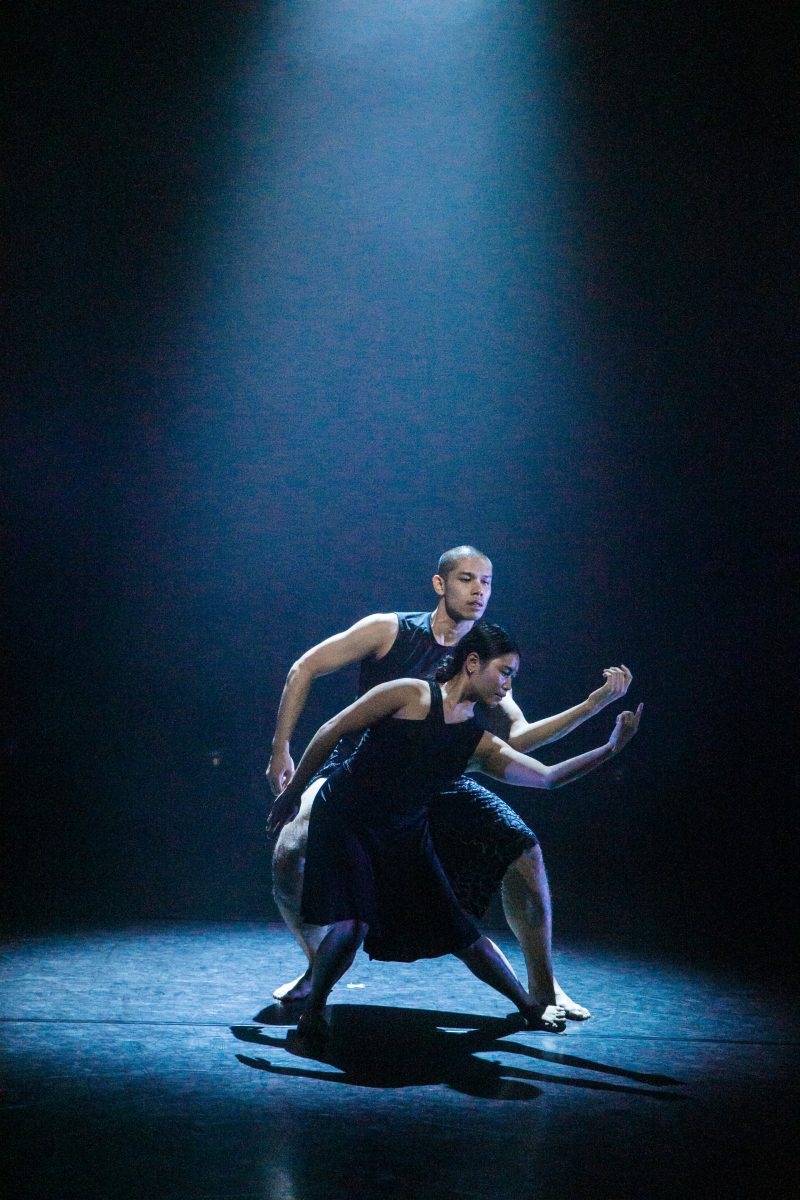
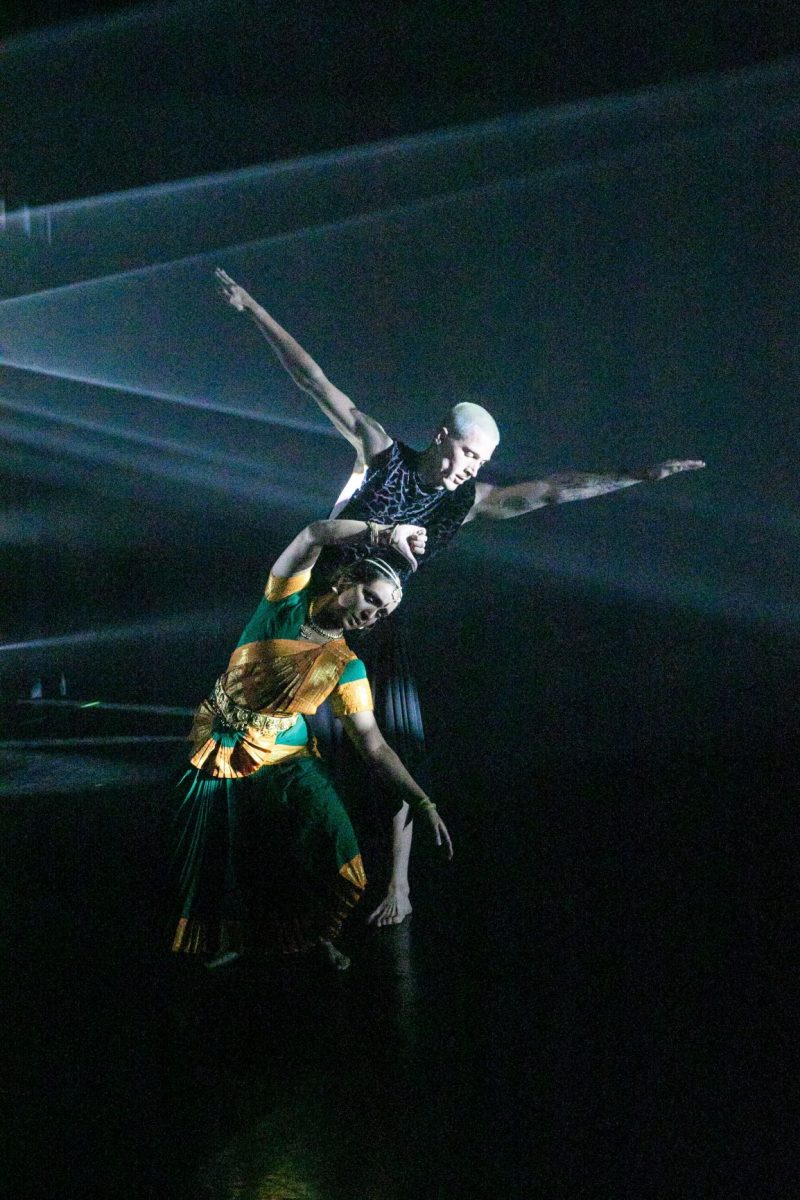
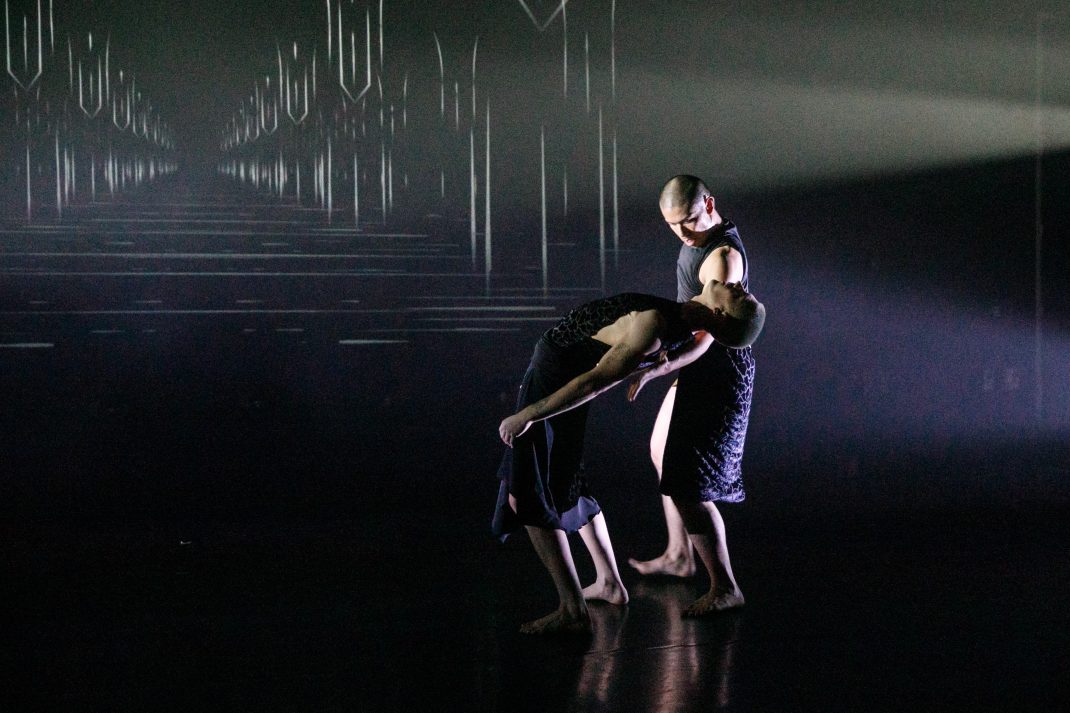
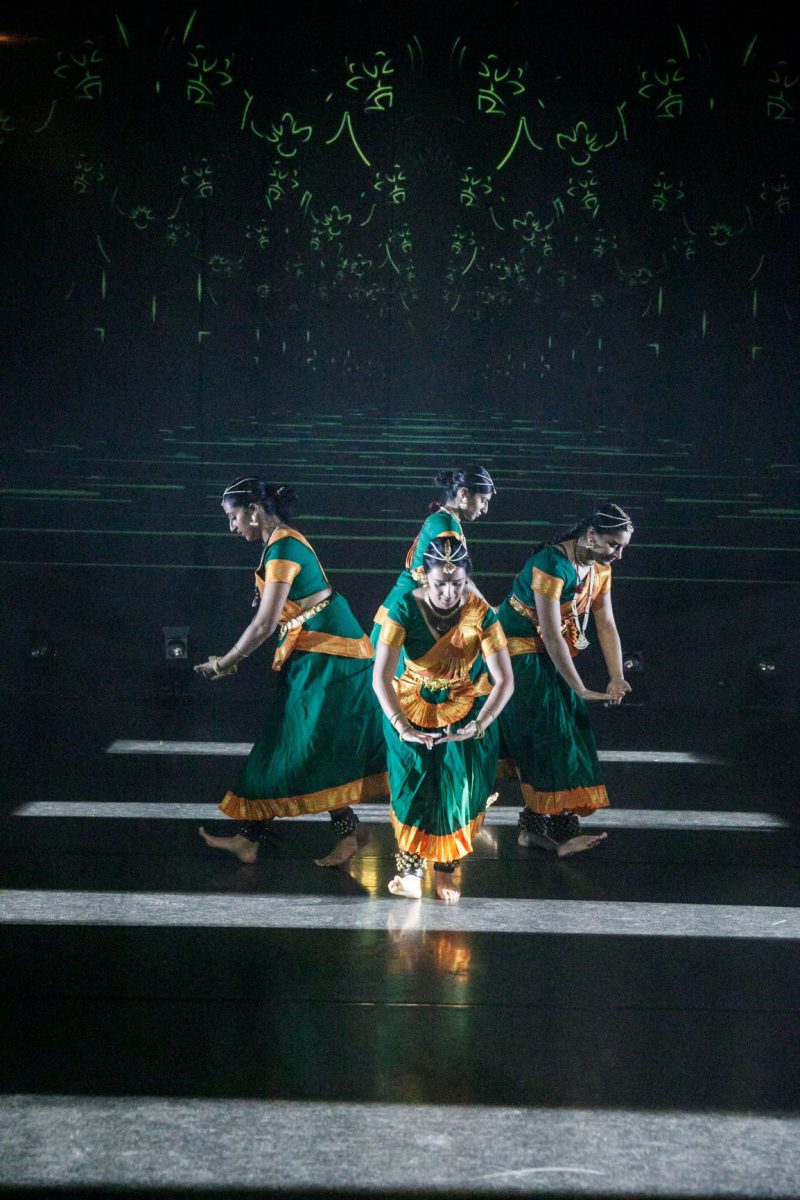
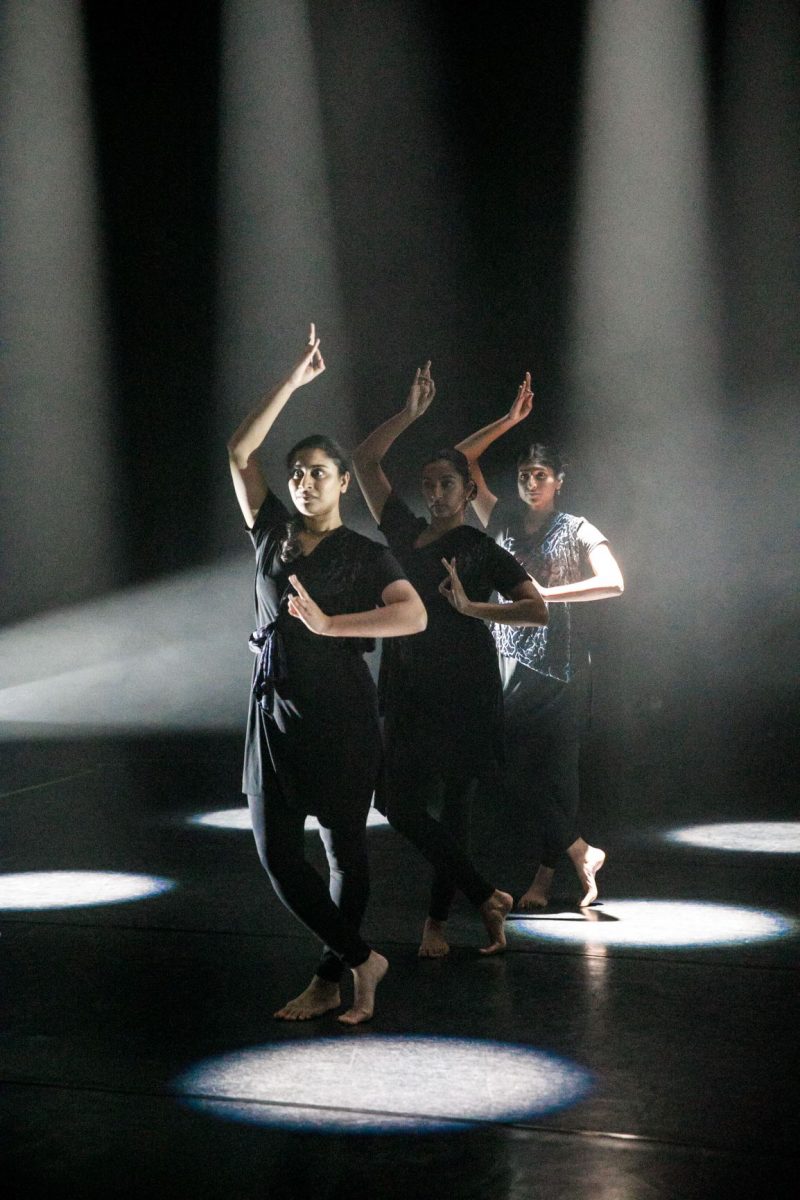
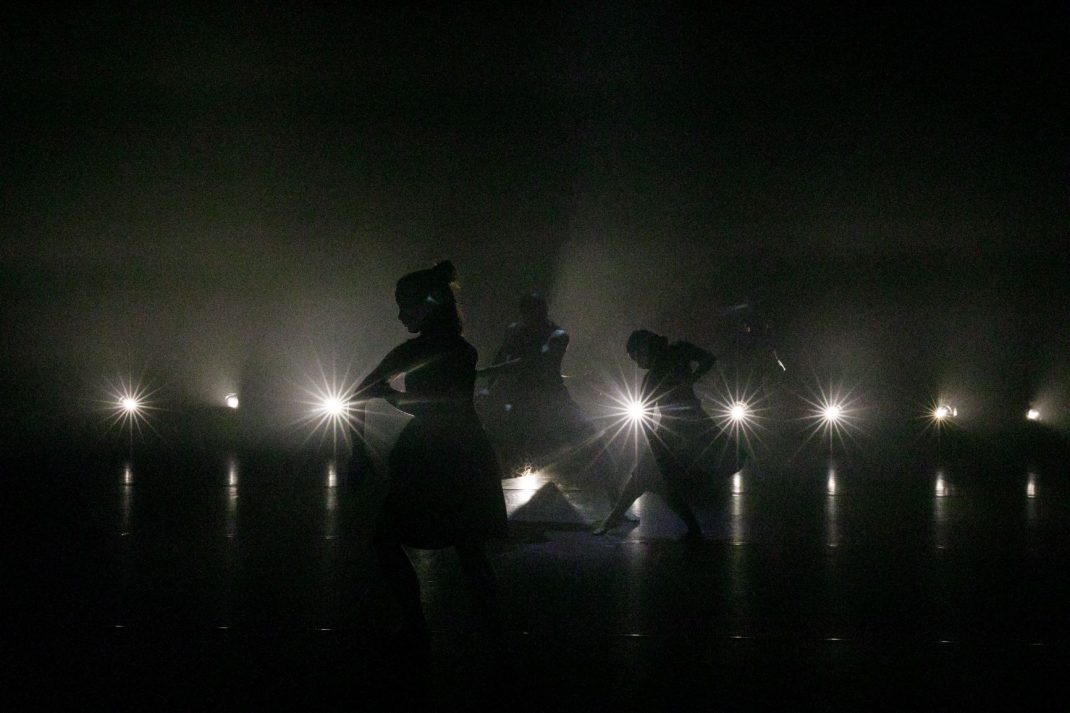
As I mentioned in my review, I was especially taken by the lighting used to illuminate the action from a different perspective, which you can see in the image immediately above. Without wishing to detract from Karen Norris’ lighting for The Pointe, which was spectacular, with this particular change of perspective I was reminded of a similar use of lighting in Graeme Murphy’s Nutcracker. The Story of Clara. As we watch the final sections of the Murphy production we feel as though we are onstage with Clara as she dances her final performance. Similarly in The Point, with this lighting change we, the audience, became part of the performance.
The Point continues to resonate in the minds (and voices) of those who saw it. There have been calls for it to travel!
Michelle Potter, 3 May 2021
All images © Andrew Sikorski
